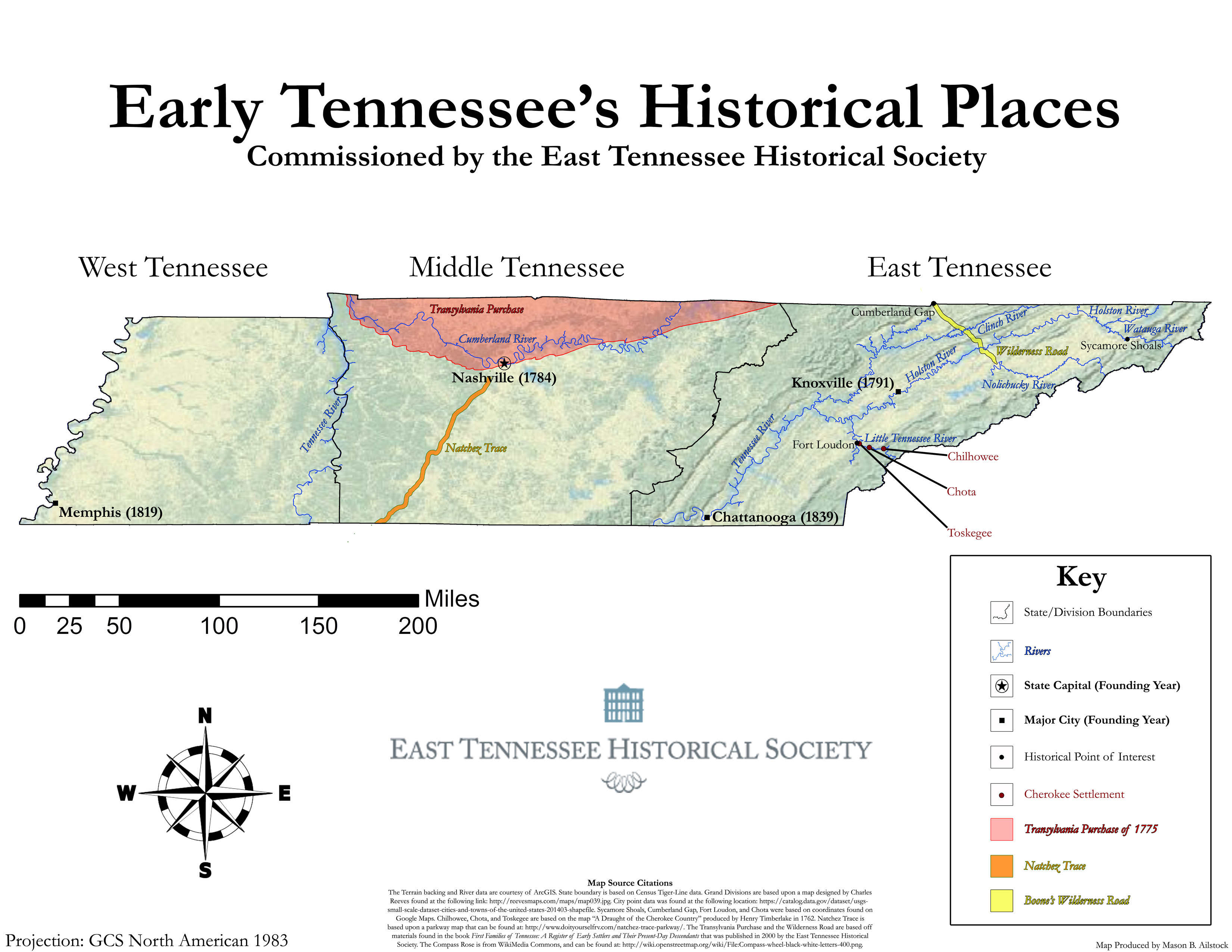The French and Indian War and the Fort Loudoun Massacre
Connecting the Thread of Early Tennessee History: Fort Loudoun to King's Mountain and Beyond
Fort Loudoun
Kelly, James C. “Fort Loudoun: British Stronghold.” The East Tennessee Historical Society’s Publications 50 (1978): 72-91.
Stone, Richard G., Jr. “Captain Paul Demere at Fort Loudoun, 1757-1760.” The East Tennessee Historical Society’s Publications 41 (1969): 17-32.
Stumpf, Stuart. “James Glen, Cherokee Diplomacy, and the Construction of an Overhill Fort.” The East Tennessee Historical Society’s Publications 50 (1978): 21-30.
The Battle of Kings Mountain
“A King’s Mountain Diary.” Ed. by Mary Hardin McCown. The East Tennessee Historical Society’s Publications 14 (1942): 102-105.
Essington, Meghan. “Memory, Manhood, and Military Service: Gentlemen and Common Planters in the Battle of King’s Mountain.” The Journal of East Tennessee History 86 (2014): 2-17.
The Watauga Compact and Watauga Purchase
Hamer, Philip M. “The Wataugans and the Cherokee Indians in 1776.” The East Tennessee Historical Society’s Publications 3 (1931): 108-126
Watuaga during the Revolutionary War
Cavendar, Anthony. “The Medical World of John Sevier.” The Journal of East Tennessee History 85 (2013): 90-107.
“Executive Journal of Gov. John Sevier.” Ed. by Samuel C. Williams. Part I. The East Tennessee Historical Society’s Publications 1 (1929): 95-153.
“Executive Journal of Gov. John Sevier.” Ed. by Samuel C. Williams. Part II. The East Tennessee Historical Society’s Publications 2 (1930): 135-149.
“Executive Journal of Gov. John Sevier.” Ed. by Samuel C. Williams. Part III. The East Tennessee Historical Society’s Publications 3 (1931): 154-182.
"Executive Journal of Gov. John Sevier.” Ed. by Samuel C. Williams. Part IV. The East Tennessee Historical Society’s Publications 4 (1932): 138-167.
"Executive Journal of Gov. John Sevier.” Ed. by Samuel C. Williams. Part V. The East Tennessee Historical Society’s Publications 5 (1933): 155-177
"Executive Journal of Gov. John Sevier.” Ed. by Samuel C. Williams. Part VI. The East Tennessee Historical Society’s Publications 6 (1934): 104-128
"Executive Journal of Gov. John Sevier.” Ed. by Samuel C. Williams. Part VII. The East Tennessee Historical Society’s Publications 7 (1935): 128-164.
Jordan, René. “The Evolution of Early Tennessee County Boundaries: Washington County.” Tennessee Ancestors 10, no. 1: April 1994.
Additional Related Articles:
Caleo, Robert L. “ ‘A Most Serious Wound’: The Memorial of George Farragut.” The Journal of East Tennessee History 79 (2007): 63-79.
Durham, Walter T. “Ulster Immigrants and the Settlement of Tennessee.” The Journal of East Tennessee History 77 Supplement (June 28-July 1, 2006): 30-44.
O’Donnell, James H. “The Virginia Expedition against the Overhill Cherokee, 1776.” The East Tennessee Historical Society’s Publications 39 (1967): 13-25.
“Tennessee Pensioners of the Revolution.” Tennessee Ancestors 5, no. 2 (August 1989): 101-107.
"The Lost Archives of the Cherokee Nation.” Ed. by James William Hagy and Stanley J. Folmsbee. Part I. The East Tennessee Historical Society’s Publications 43 (1971): 112-122.
“The Lost Archives of the Cherokee Nation.” Ed. by James William Hagy and Stanley J. Folmsbee. Part II. The East Tennessee Historical Society’s Publications 44 (1972): 114-125. (Part 1)
"The Lost Archives of the Cherokee Nation.” Ed. by James William Hagy and Stanley J. Folmsbee. Part I. The East Tennessee Historical Society’s Publications 44 (1972): 114-125. (Part 2)
Williams, Samuel C. “Fort Robinson on the Holston.” The East Tennessee Historical Society’s Publications 4 (1932): 22-31.
 ETHS Content Essays, Primary Sources and Student Activities
ETHS Content Essays, Primary Sources and Student Activities